Intercultural Cuisine Website Project
Project Overview
For my Intercultural course project, our team created a website where users can learn about traditional dishes from different countries.
We focused on France, Algeria, and Armenia.
The website included:
- Recipes (text + images)
- Cooking videos
- An interactive map to explore world cuisines
The goal was to highlight how culinary traditions reflect the culture of each country, while offering an engaging and easy-to-navigate platform.
Screenshots
Here you can see some results.
The website is fully responsive.
Homepage
Includes a hero section, country selection, a mini tutorial on how to use the site, and an interactive map.
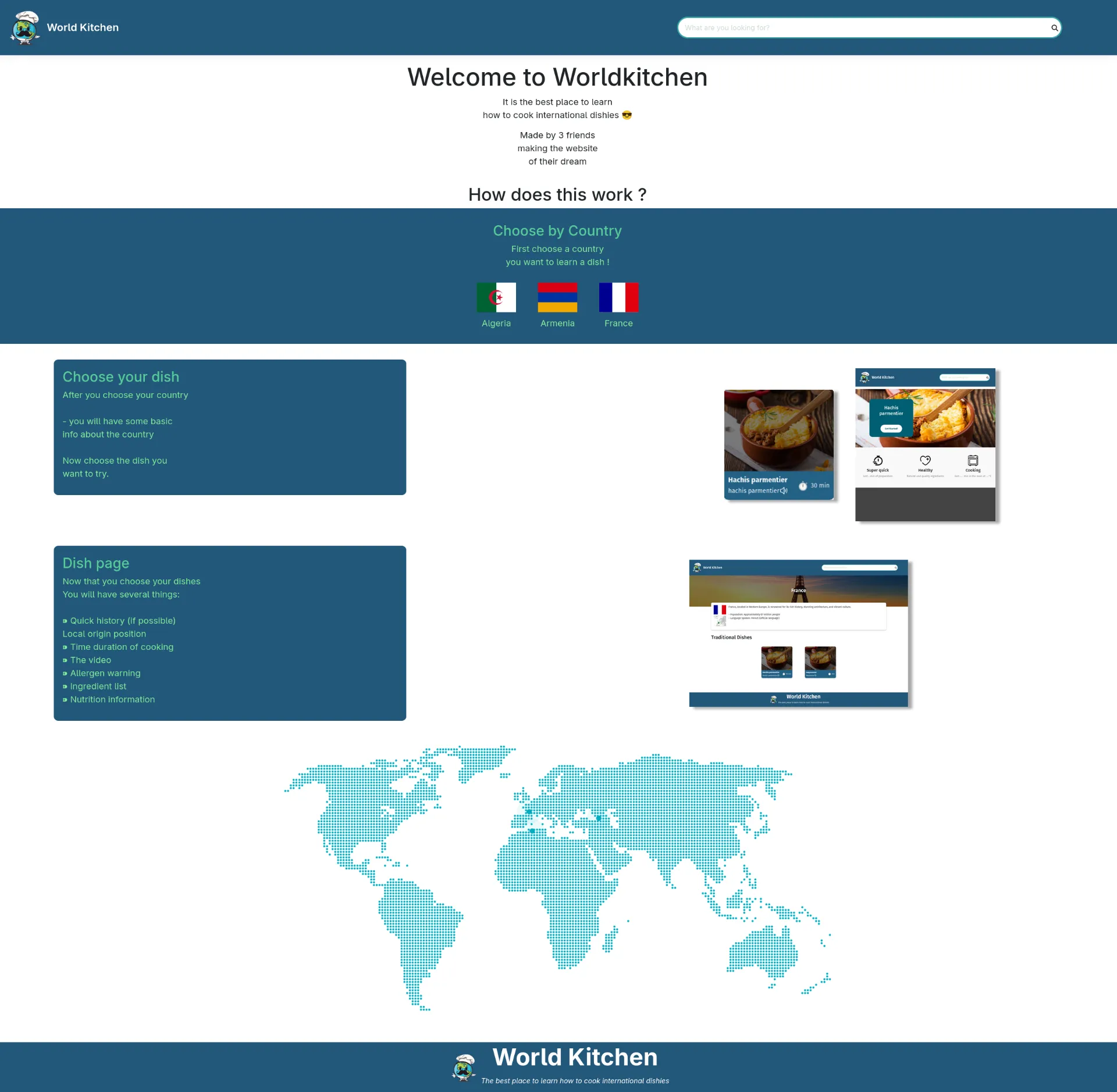
Search Bar on Mobile
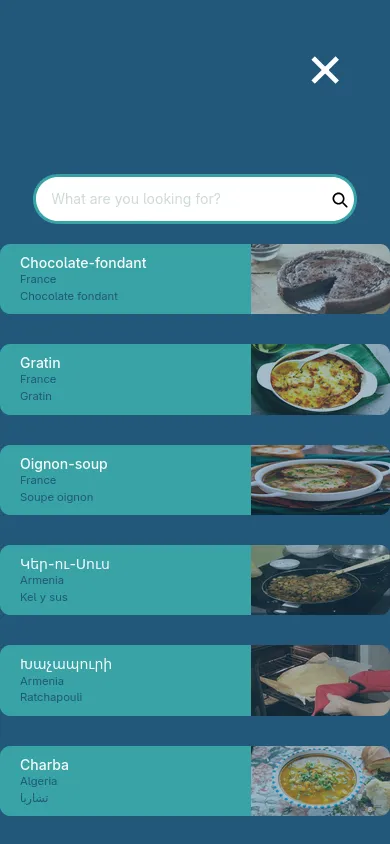
Dish Page (Example: French Gratin)
Features a visual presentation with quick facts, cooking video, ingredient list with checkboxes, preparation steps with checkboxes to track progress, and nutrition facts.

Country Page (Example: Armenia)
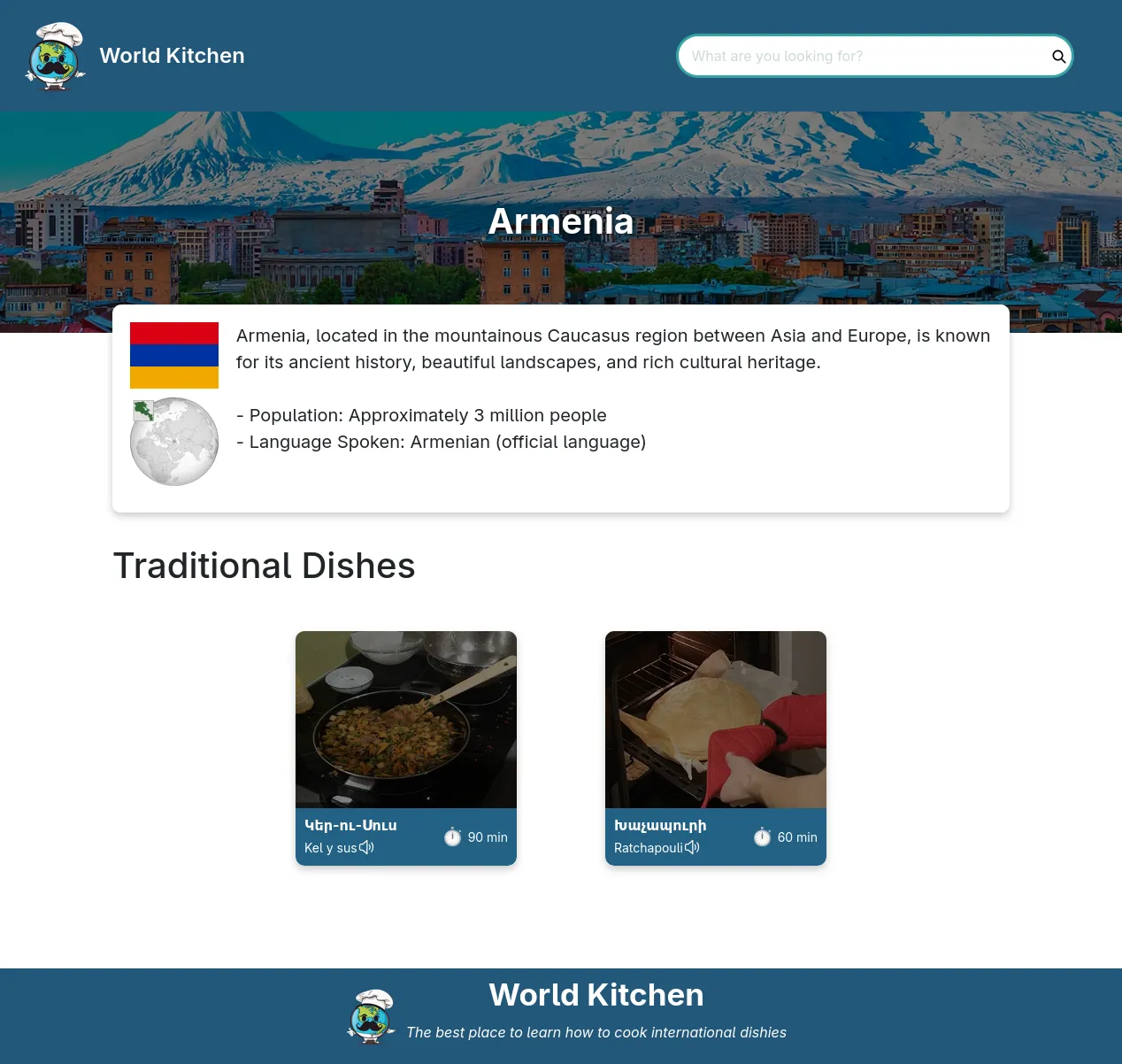
Repository & How to Run
You can check out the code here:
👉 WorldKitchen GitHub Repository
To run the project, you’ll need .NET 8.0.0.
- Trust development certificates:
dotnet dev-certs https --trust- Run with hot reload:
dotnet watch run
or simply:
dotnet run
Design Phase
- We used Lunaci (instead of Figma) for the initial design mockups.
- I collaborated on the design to make it clear, appealing, and user-friendly.
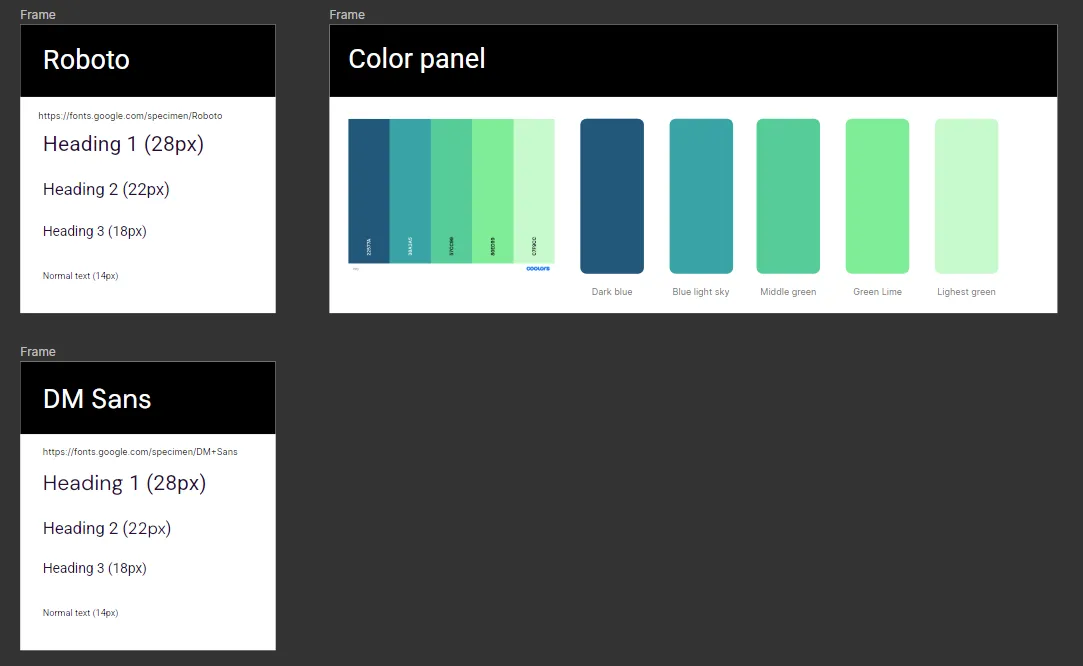
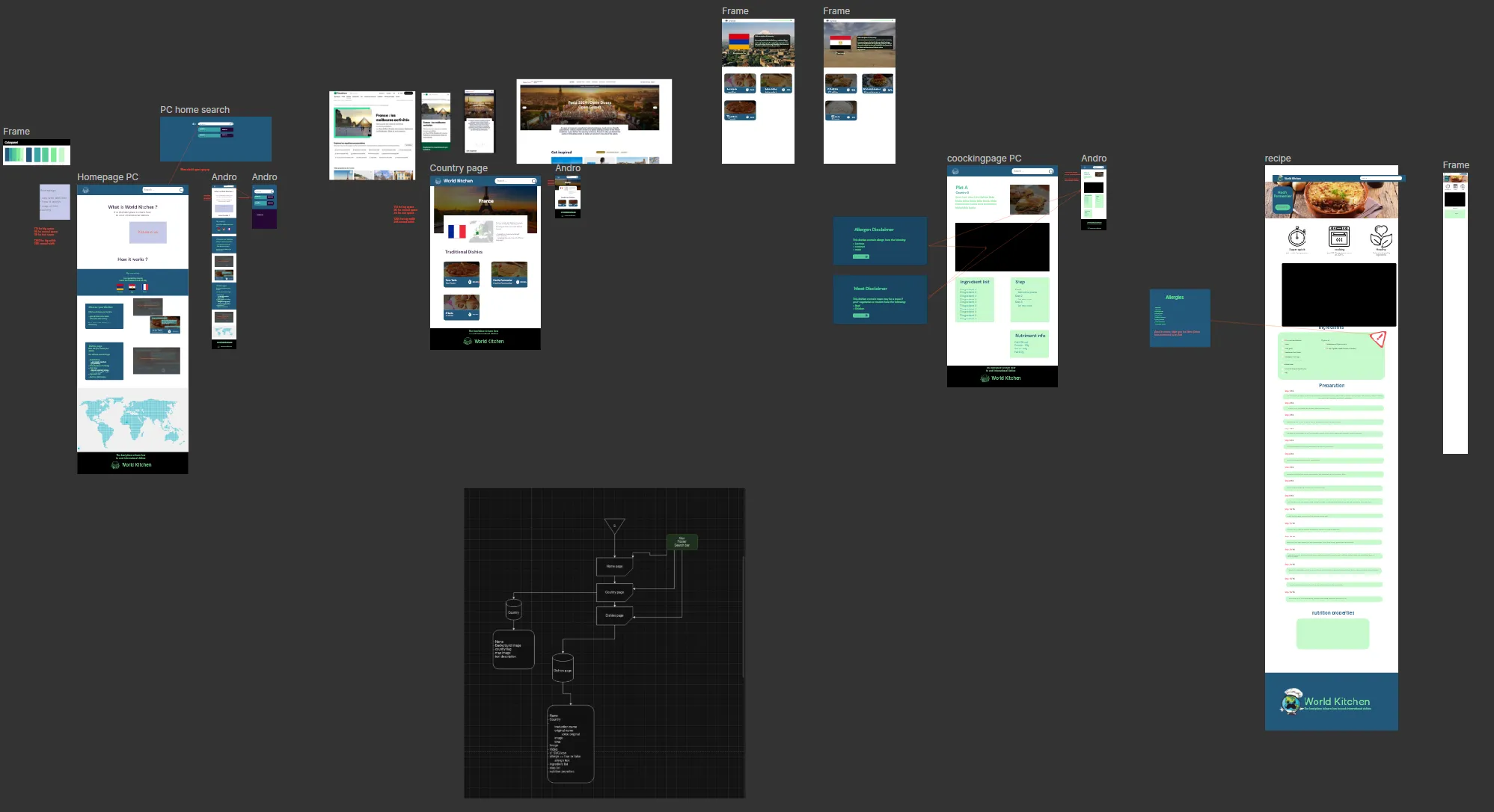
Development Phase
I built the majority of the website in .NET (ASP.NET MVC with C#).
- Frontend: Focused on making the UI clean, clear, and responsive.
- Backend: The biggest challenge was working with controllers and injecting data from the SQLite database.
- I chose SQLite because the project was not large enough to require a heavier option like Oracle.
Here’s the logical database model:
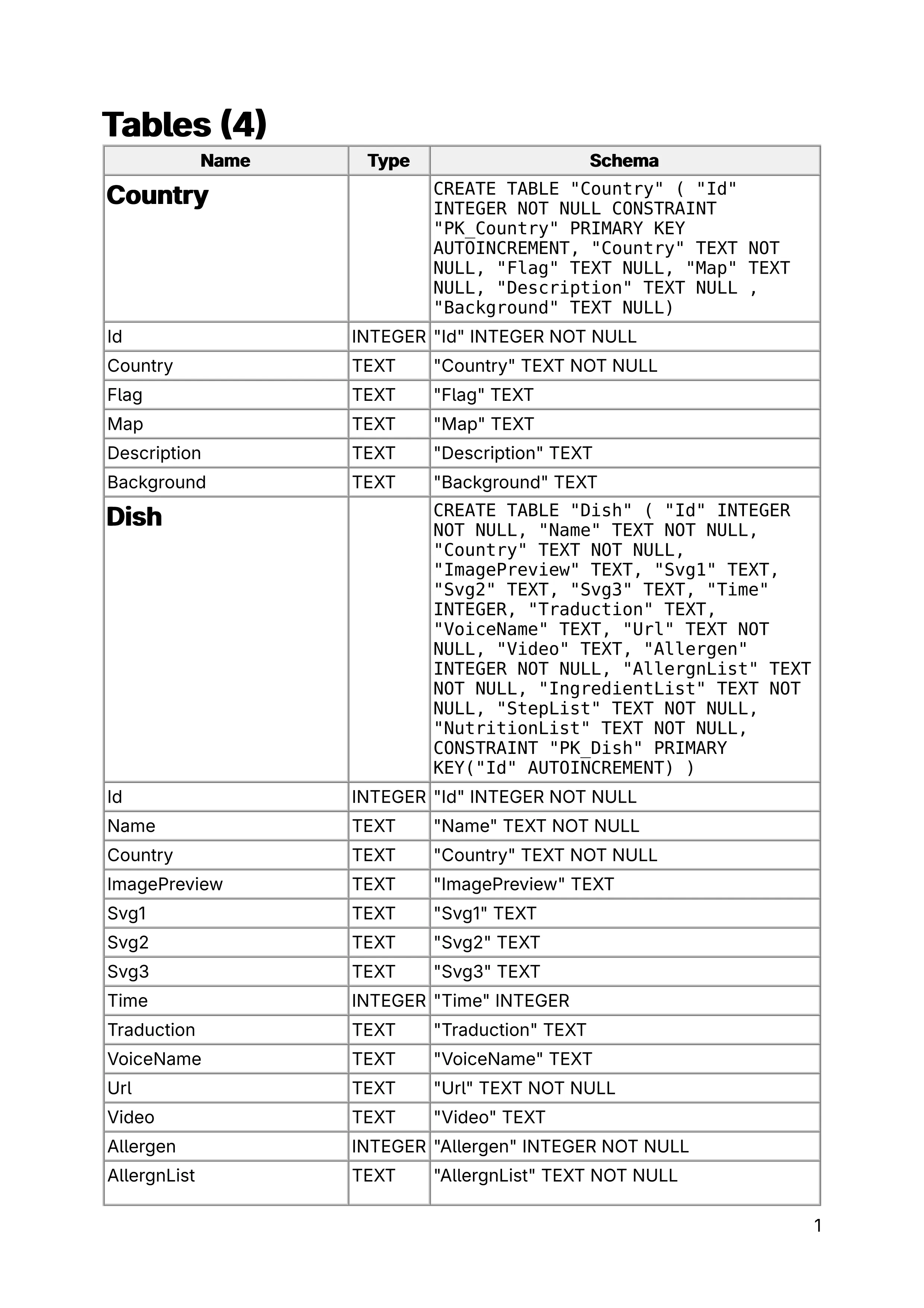
To solve major bugs, I created several flowcharts to visualize the logic:
- Controller logic flow
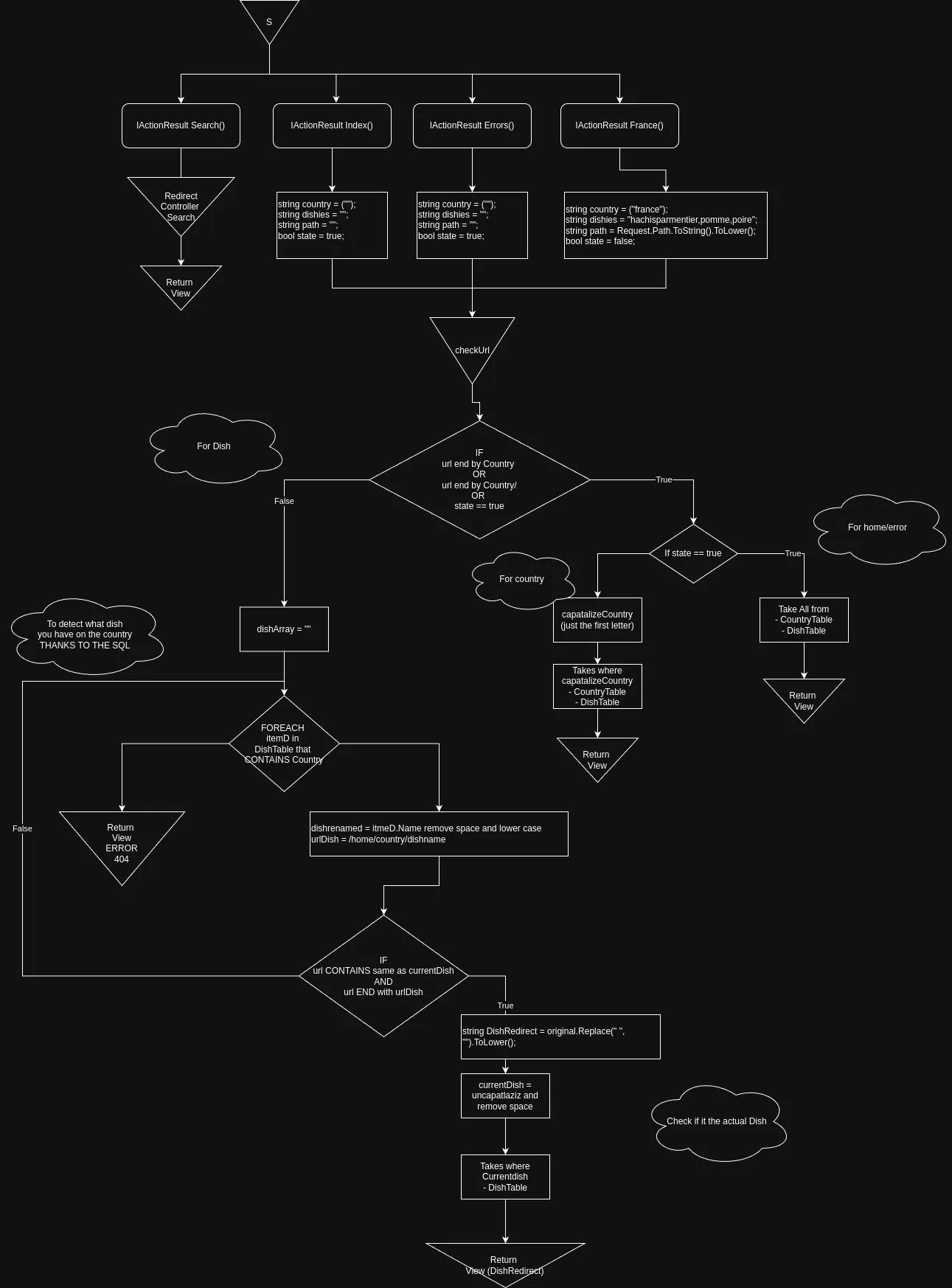
- Data injection for dish pages
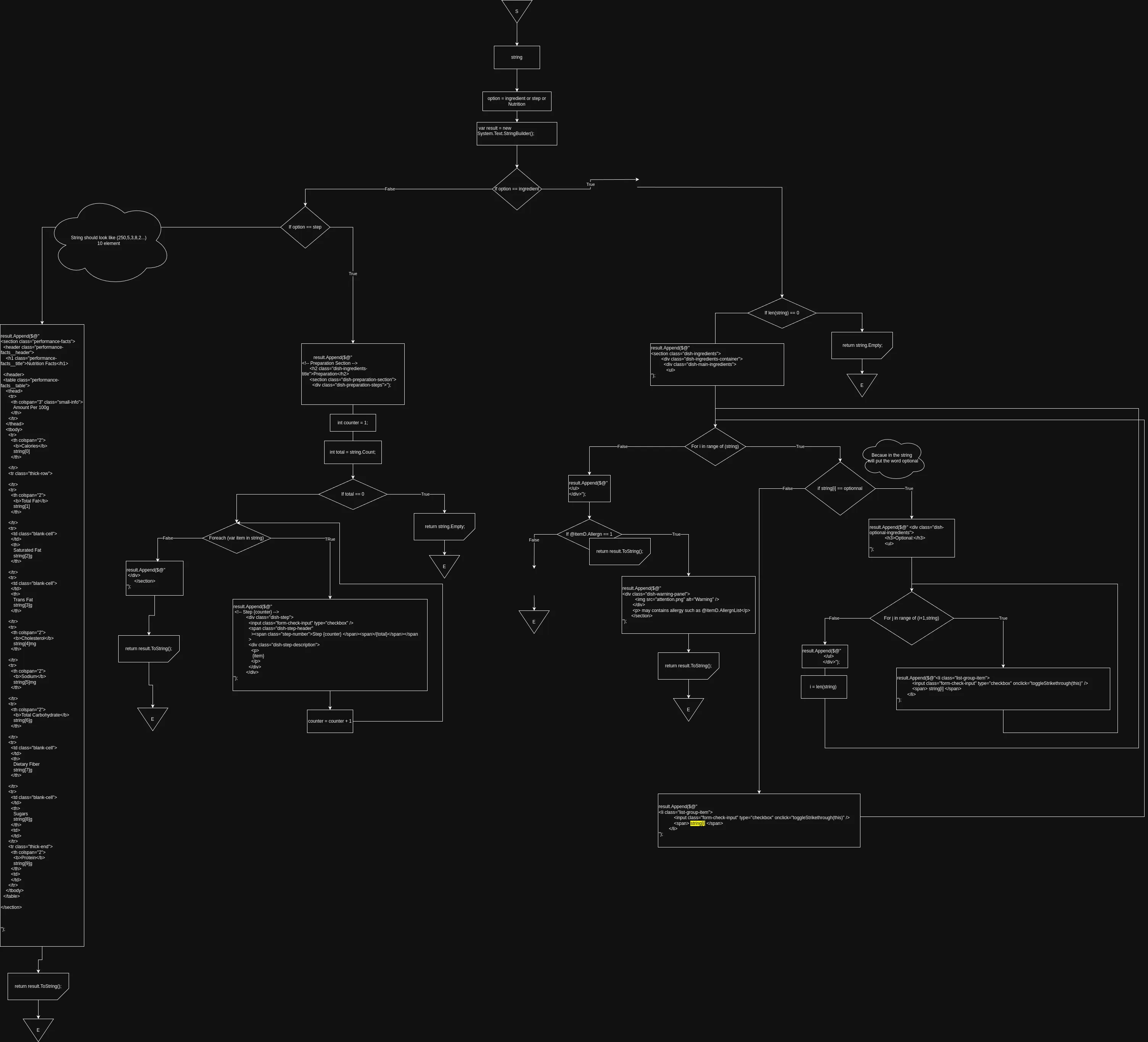
This was also an opportunity to apply skills I learned during my internship at Geves, where I worked with developers using ASP.NET MVC.
Team Contributions
April – June
- Design
- Writing
August – November
- Finished design
- Coding
October – December
- Cooking videos (filming & editing)
Time Spent
- 20% on design
- 60% on backend
- 20% on frontend
What I Would Change
Honestly, nothing. The project was very educational and rewarding.
What I Liked
- Design: Strengthened my design skills.
- Backend: Improved my knowledge of databases and .NET MVC.
- Frontend: Enhanced my JavaScript and UI development skills.
- Full-Stack: Valuable exposure to both frontend and backend development.
Conclusion
This project was a highly rewarding experience.
It allowed me to:
- Strengthen both my frontend and backend skills
- Gain valuable full-stack development experience
- Overcome technical challenges while learning a lot
I’m proud of what we accomplished as a team and of the final website we delivered.